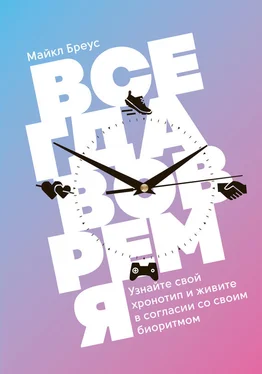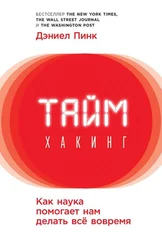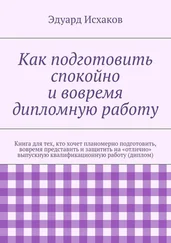Amber Brooks and Leon Lack, “A Brief Afternoon Nap Following Nocturnal Sleep Restriction: Which Nap Duration Is Most Recuperative?” Sleep, November 2006.
S. Asaoka, H. Masaki, K. Ogawa, et al., “Performance Monitoring During Sleep Inertia After a 1-h Daytime Nap”, Journal of Sleep Research , September 2010.
A. Mednick, K. Nakayama, and R. Stickgold, “Sleep-Dependent Learning: A Nap Is as Good as a Night”, Natural Neuroscience , July 2003.
Интерактивный круг сна для самостоятельного использования можно найти на www.saramednick.com.
J. A. Vitale, E. Roveda, et al., “Chronotype Influences Activity Circadian Rhythm and Sleep: Differences in Sleep Quality Between Weekdays and Weekend”, Chronobiology International, April 2015.
T. Roenneberg, K. V. Allebrandt, et al., “Social Jetlag and Obesity”, Current Biology , May 2012.
Michael Parsons et al., “Social Jetlag, Obesity and Metabolic Disorder: Investigation in a Cohort Study”, International Journal of Obesity , January 2015.
Floor M. Kroese, Denise T. D. DeRidder, et al., “Bedtime Procrastination: Introducing a New Area of Procrastination”, Frontiers in Psychology , June 2014.
Jane E. Ferrie, Martin J. Shipley, et al., “A Prospective Study of Change in Sleep Duration: Associations with Mortality in the Whitehall II Cohort”, Sleep , December 2007.
Wendy M. Toxel, “It’s More Than Sex: Exploring the Dyadic Nature of Sleep and Implications for Health”, Psychosomatic Medicine , July 2010.
Megumi Hatori, Christopher Vollmers, Satchidananda Panda, et al., “Time-Restricted Feeding without Reducing Caloric Intake Prevents Metabolic Diseases in Mice Fed a High-Fat Diet”, Cell Metabolism , June 2012.
Amandine Chaix, Amir Zarrinpar, Phuong Miu, and Satchidananda Panda, “Time-Restricted Feeding Is a Preventative and Therapeutic Intervention against Diverse Nutritional Challenges”, Cell Metabolism , December 2014.
Storch and Blum, “A Highly Tunable Dopaminergic Oscillator Generates Ultradian Rhythms of Behavioral Arousal”.
M. Garaulet, P. G о mez-Abellán, et al. “Timing of Food Intake Predicts Weight Loss Effectiveness”, International Journal of Obesity , January 2013.
Leah E. Cahill, Stephanie E. Chiuve, Eric Rimm, et al., “Prospective Study of Breakfast Eating and Incident Coronary Heart Disease in a Cohort of Male US Health Professionals”, Circulation , May 2013.
В оригинале автор использует выражение a clock on the rocks ( англ .) – часы с бриллиантами. – Прим. ред .
Tracy L. Rupp, Christine Acebo, and Mary A. Carskadon, “Evening Alcohol Suppresses Salivary Melatonin in Young Adults”, Chronobiology International , 2007.
Christopher B. Forsyth, et al., “Circadian Rhythms, Alcohol and Gut Interactions”, Alcohol , November 2014.
Uduak S. Udoh et al., “The Molecular Circadian Clock and Alcohol-Induced Liver Injury”, Biomolecules , October 2015.
Roger H. L. Wilson, Edith J. Newman, Henry W. Newman, “Diurnal Variation in Rate of Alcohol Metabolism”, Journal of Applied Physiology , March 1956.
C. L. Ruby, A. J. Brager, et al., “Chronic Ethanol Attenuates Circadian Photic Phase Resetting and Alters Nocturnal Activity Patterns in the Hamster”, American Journal of Physiology , September 2009.
G. Prat and A. Adan, “Influence of Circadian Typology on Drug Consumption, Hazardous Alcohol Use, and Hangover Symptoms”, Chronobiology International , April 2011.
William R. Lovallo, Thomas L. Whitsett, et al., “Caffeine Stimulation of Cortisol Secretion Across the Waking Hours in Relation to Caffeine Intake Levels”, Psychosomatic Medicine , February 2005.
Anjalene Whittier, Sixto Sanchez, et al., “Eveningness Chronotype, Daytime Sleepiness, Caffeine Consumption, and Use of Other Stimulants Among Peruvian University Students”, Journal of Caffeine Research , March 2014.
Tina M. Burke, Rachel R. Markwald, et al., “Effects of Caffeine on the Human Circadian Clock in Vivo and in Vitro”, Science Translational Medicine , September 2015.
C. Drake, T. Roehrs, J. Shambroom, and T. Roth, “Caffeine Effects on Sleep Taken 0, 3, or 6 Hours Before Going to Bed”, Journal of Clinical Sleep Medicine , November 2013.
Roy F. Baumeister, Ellen Bratslavsky, Mark Muraven, and Dianne M. Tice, “Ego Depletion: Is the Active Self a Limited Resource?” Personality Processes and Individual Differences , May 1998.
Frank A. J. L. Scheer, Christopher J. Morris, and Steven A. Shea, “The Internal Circadian Clock Increases Hunger and Appetite in the Evening Independent of Food Intake and Other Behaviors”, Obesity , March 2013.
Laura K. Fonken, Joanna L. Workmann, et al., “Light at Night Increases Body Mass by Shifting the Time of Food Intake”, PNAS , October 2010.
Christopher S. Colwell, Dawn H. Loh, et al., “Misaligned Feeding Impairs Memory”, eLife , December 2015.
Angela Kong, Anne McTiernan, et al., “Associations Between Snacking and Weight Loss and Nutrient Intake Among Postmenopausal Overweight-to-Obese Women in a Dietary Weight Loss Intervention”, Journal of the American Dietary Association , December 2011.
C. A. Crispim, I. Z. Zimberg, B. G. dos Reis, R. M. Diniz, S. Tufik, and M. T. de Mello, “Relationship Between Food Intake and Sleep Pattern in Healthy Individuals”, Journal of Clinical Sleep Medicine, December 2011.
A. Harb, R. Levandovski, et al., “Night Eating Patterns and Chronotypes: A Correlation with Binge Eating Behaviors”, Psychiatry Research, December 2012.
Boris Egloff, Anja Tausch, and Carl-Walter Kohlman, “Relationships Between Time of Day, Day of the Week, and Positive Mood: Exploring the Role of the Mood Measure”, Motivation and Emotion , January 1995.
Sunita Sah, Don A. Moore, and Robert J. MacCoun, “Cheap Talk and Credibility: The Consequences of Confidence and Accuracy on Advisor Credibility and Persuasiveness”, Organizational Behavior and Human Decision Processes , July 2013.
J. M. Antúnez, J. F. Navarro, A. Adan, “Circadian Topography Is Related to Resilience and Optimism in Healthy Adults”, Chronobiology International , May 2015.
Читать дальше
Конец ознакомительного отрывка
Купить книгу



![Сергей Семеркин - Когда факс приходит не вовремя [litres самиздат]](/books/436994/sergej-semerkin-kogda-faks-prihodit-ne-vovremya-li-thumb.webp)








